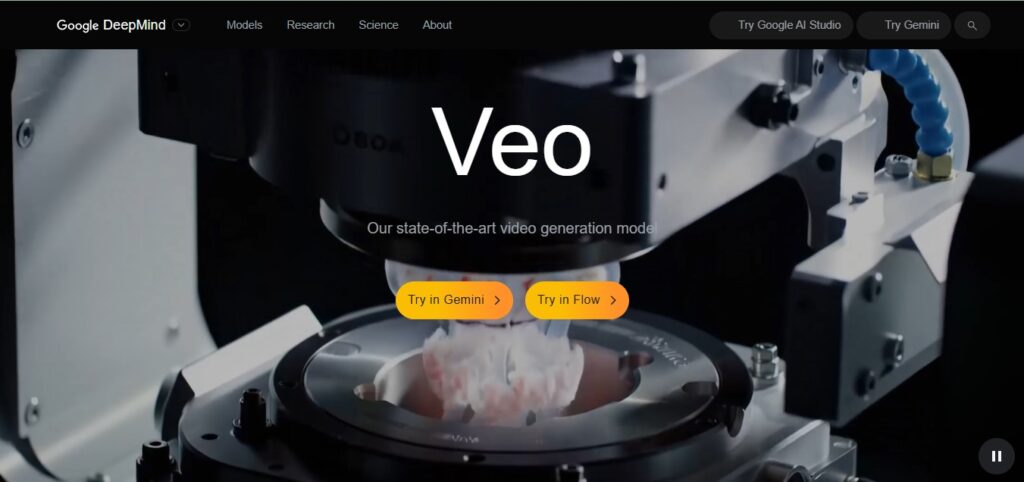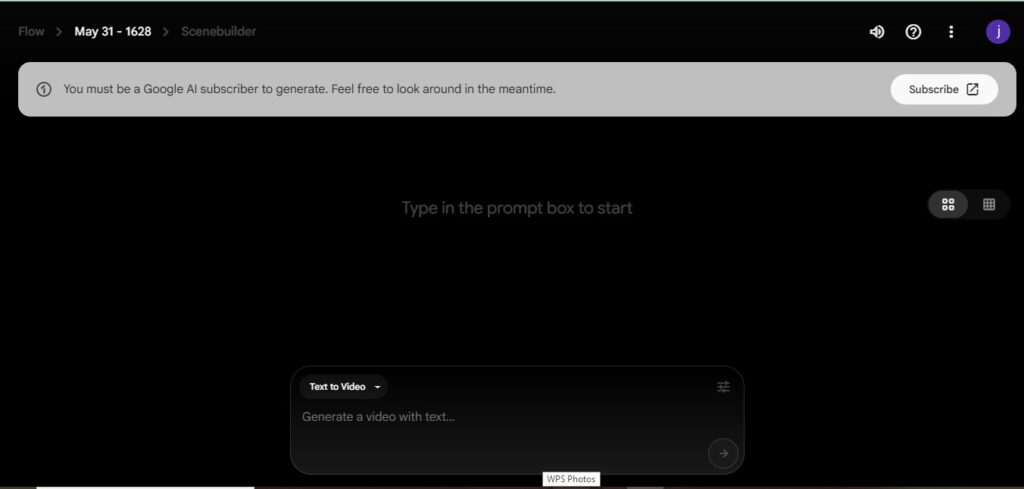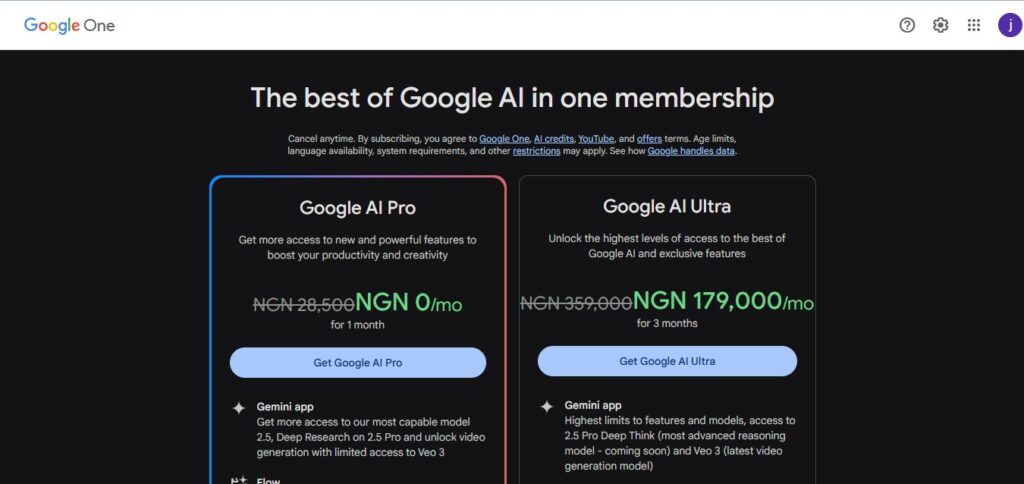Artificial intelligence has been transforming the way we create digital content, and Google’s Veo is at the forefront of this revolution. From short clips to cinematic-quality videos, Veo has rapidly evolved, with Veo 3 setting a new benchmark in AI-generated video. But how does it compare to its predecessor, Veo 2? What makes Veo 3 a game-changer, and is it worth upgrading?
In this in-depth comparison, we’ll break down the key differences between Veo 2 and Veo 3, covering resolution, audio capabilities, duration, customization, pricing, and real-world applications. Whether you’re a filmmaker, marketer, or AI enthusiast, understanding these advancements will help you decide which version suits your creative needs.

1. Video Quality and Resolution: From HD to 4K
One of the most noticeable upgrades in Veo 3 is its 4K resolution support, a massive leap from Veo 2’s 1080p output. While Veo 2 already produced impressive visuals, Veo 3 takes realism to the next level with sharper details, better lighting, and more accurate physics.

For example, if you prompt Veo 2 to generate a “sunset over a mountain range,” you’ll get a decent HD video with basic textures. But with Veo 3, the same prompt yields a cinematic experience—dynamic shadows, realistic cloud movements, and even subtle details like light reflecting off water. This makes Veo 3 ideal for professional filmmakers and advertisers who need high-quality visuals without expensive production setups.
2. Audio Generation: From Silent Clips to Full Soundscapes
Veo 2 focused mainly on video generation, leaving users to manually incorporate audio elements like background music or sound effects after the fact. Unlike its successor, it lacked built-in audio capabilities, meaning creators had to edit in external sound files to complete their projects. This extra step made the workflow more time-consuming compared to Veo 3’s all-in-one approach.
Veo 3, however, introduces native audio generation, meaning it can produce synchronized sound effects, ambient noise, and even AI-generated voiceovers.
Veo 2 focused mainly on video generation, leaving users to manually incorporate audio elements like background music or sound effects after the fact. Unlike its successor, it lacked built-in audio capabilities, meaning creators had to edit in external sound files to complete their projects
Imagine creating a short film scene with Veo 2—you’d get a visually compelling clip but would need to manually add dialogue and background music. With Veo 3, you can simply describe the scene: “A detective interrogates a suspect in a dimly lit room, with rain tapping against the window and tense orchestral music.” The AI generates not just the visuals but also the rain sounds, dialogue tone, and soundtrack, saving hours of post-production work.
This feature alone makes Veo 3 a powerhouse for content creators who want an all-in-one video solution.
3. Video Length: 8 Seconds vs. 1 Minute
One of Veo 2’s biggest limitations was its 8-second cap on video length. While useful for quick social media clips, it wasn’t enough for storytelling or detailed demonstrations.
Veo 3 extends this to 1 minute, allowing for more complex narratives. Need a product demo, a short animated story, or a scene for a film pitch? Veo 3 can handle it.
However, there’s a catch—longer videos consume more credits, especially in HD or 4K mode. So while Veo 3 offers more flexibility, users must manage their subscription plans carefully to avoid running out of credits too quickly.
4. Prompt Understanding and Customization

Both Veo 2 and Veo 3 use natural language processing (NLP) to interpret prompts, but Veo 3 is far more sophisticated.
- Veo 2 could handle straightforward prompts like “a cat playing with a ball of yarn.”
- Veo 3 understands nuanced requests, such as “a cat playing with a ball of yarn in a 1950s cartoon style, with exaggerated movements and vintage film grain.”
Additionally, Veo 3 offers advanced editing tools in Google’s Flow platform, letting users adjust camera angles, lighting, and even character expressions after generation. The added flexibility and control transform it from a simple video generator into a comprehensive production solution that adapts to professional workflows.
For filmmakers, animators, and digital marketers, these improvements mean significantly more creative freedom and efficiency in their projects. The tool’s expanded capabilities essentially bridge the gap between AI-assisted creation and professional-grade output, making it far more valuable for those who demand high-quality results.
5. Pricing and Accessibility

Veo 2 was initially available through Google’s Vertex AI, costing around $0.50 per second—meaning an 8-second clip would cost $4.
Google has integrated Veo 3 into its premium Google AI Pro and Ultra membership tiers, offering tiered access based on user needs:
At the Pro level (approximately $20 monthly), subscribers get restricted Veo 3 functionality including capped resolution and a limited credit allowance. This entry-level option works well for casual creators testing the platform’s capabilities.
The Ultra tier (around $120 per month) unlocks the complete Veo 3 experience with:
Uncompromised 4K video production
Extended duration allowances for longer projects
Expedited processing through priority rendering queues
This multi-tiered approach allows creators to select the package that best matches their production requirements and budget constraints, from hobbyists to professional studios. The Ultra plan in particular delivers the full spectrum of Veo 3’s advanced features for those needing maximum output quality and efficiency.
There’s also a 1-month free trial in select regions (like Brazil), allowing users to test Veo 3 before committing.
While Veo 3 is more expensive, its all-in-one capabilities (video + audio + editing) justify the cost for serious creators.
6. Real-World Applications: Who Should Upgrade?
For Filmmakers & Animators
Veo 3 represents a quantum leap in AI video generation, revolutionizing creative workflows with its stunning 4K visuals, expanded runtime, and Hollywood-grade sound design. These breakthrough capabilities position it as the ultimate solution for storyboard visualization, indie film production, and digital animation.
The platform’s cinematic-quality output enables directors to prototype complex scenes with unprecedented accuracy, while independent filmmakers can now produce professional-grade content without expensive equipment. For animators, the combination of extended duration and rich audio support means entire animated sequences can be generated with cohesive visuals and sound – a capability that previously required multiple specialized tools.
This transformative technology effectively democratizes high-end video production, putting studio-quality results within reach of solo creators and small teams. Whether you’re previzualizing a blockbuster or crafting an animated short, Veo 3 delivers the tools to bring ambitious visions to life with remarkable fidelity and efficiency.Veo 3 represents a quantum leap in AI video generation, revolutionizing creative workflows with its stunning 4K visuals, expanded runtime, and Hollywood-grade sound design. These breakthrough capabilities position it as the ultimate solution for storyboard visualization, indie film production, and digital animation.
The platform’s cinematic-quality output enables directors to prototype complex scenes with unprecedented accuracy, while independent filmmakers can now produce professional-grade content without expensive equipment. For animators, the combination of extended duration and rich audio support means entire animated sequences can be generated with cohesive visuals and sound – a capability that previously required multiple specialized tools.
This transformative technology effectively democratizes high-end video production, putting studio-quality results within reach of solo creators and small teams. Whether you’re previzualizing a blockbuster or crafting an animated short, Veo 3 delivers the tools to bring ambitious visions to life with remarkable fidelity and efficiency.
For Marketers & Social Media Managers
Veo 2 was great for quick ads, but Veo 3’s audio integration and longer clips mean you can create full promotional videos without external editing.
For Educators & Content Creators
Need explainer videos with voiceovers? Veo 3 automates the entire process, whereas Veo 2 required manual audio editing.
7. Limitations and Ethical Concerns
While Veo 3 represents a massive leap forward in AI video generation, it still comes with some limitations that users should consider. The technology continues to evolve, and certain areas still require refinement before reaching perfection.
The system occasionally struggles with maintaining consistent character movements in complex multi-character scenes, sometimes producing unnatural interactions between subjects. Lip-syncing remains particularly challenging for non-English languages, often resulting in mismatched mouth movements during dialogue sequences.
Additionally, while the 4K output is impressive, the rendering process can be resource-intensive, potentially causing delays during peak usage times. The watermarking system, while important for ethical reasons, may not be ideal for all professional applications where seamless integration is required.
These limitations don’t negate Veo 3’s groundbreaking capabilities, but they’re important factors to weigh when considering the platform for professional projects. As with any cutting-edge technology, users should anticipate both its remarkable strengths and current constraints when planning their production workflows.
- Lip-syncing: Still struggles with non-English languages.
- Complex Scenes: Multi-character interactions can sometimes look unnatural.
- Watermarking: Google uses SynthID to label AI-generated content, preventing misuse but also making it traceable.
| Feature | Veo 2 | Veo 3 | Upgrade |
|---|---|---|---|
| Video Quality | 4K @ 30fps | 4K @ 60fps | +100% smoother |
| Field of View | 120° | 150° Ultra Wide | +25% wider |
| Battery Life | 2.5 hours | 4 hours | +60% longer |
| Stabilization | Basic EIS | AI Tracking Stabilization | 🤖 Smart tracking |
| Smart Features | Manual controls | Voice commands + Auto-tracking | 🎤 Hands-free |
| Live Streaming | ❌ Not supported | ✅ 1080p streaming | 📡 New capability |
| Multi-Cam Sync | Single unit | Sync 3 cameras | 🎥 Multi-angle |
Final Verdict: Is Veo 3 Worth It?
If you’re a casual user creating short clips, Veo 2 might still suffice. But for professionals who need longer, higher-quality videos with built-in audio, Veo 3 is the clear winner.
The jump from Veo 2 to Veo 3 is like going from a basic DSLR to a Hollywood camera—more control, better quality, and far more creative possibilities.
So, is it worth upgrading? Absolutely—if you’re serious about AI-powered video creation.
Want to Try Veo 3?
Check out Google’s official Veo page or sign up for the free trial to see the difference yourself!
Would you upgrade to Veo 3, or stick with Veo 2? Let us know in the comments!
Veo 2 vs. Veo 3: Key Differences
Tap questions to reveal detailed comparisons
What’s the main upgrade in Veo 3’s video quality?
4K at 30fps
120° FOV
Basic stabilization
4K at 60fps
150° ultra-wide
AI-powered stabilization
How does battery life compare?
Veo 2: 2.5 hours continuous
Veo 3: 4 hours (+60% improvement)
Both support quick-charge
What smart features are new in Veo 3?
- Auto-tracking for solo creators
- Voice command controls
- Live streaming capability
- Multi-camera sync (up to 3 units)
Is the Veo 3 worth the price difference?
For casual users: Veo 2 still excellent
For professionals: Veo 3’s AI features justify cost
Upgrade worth it if: You need live streaming or auto-tracking


